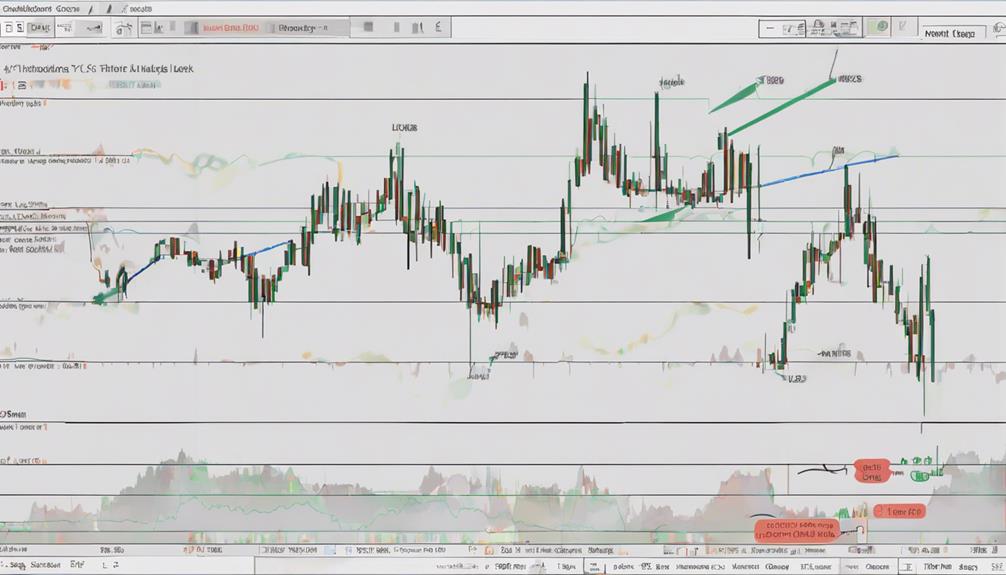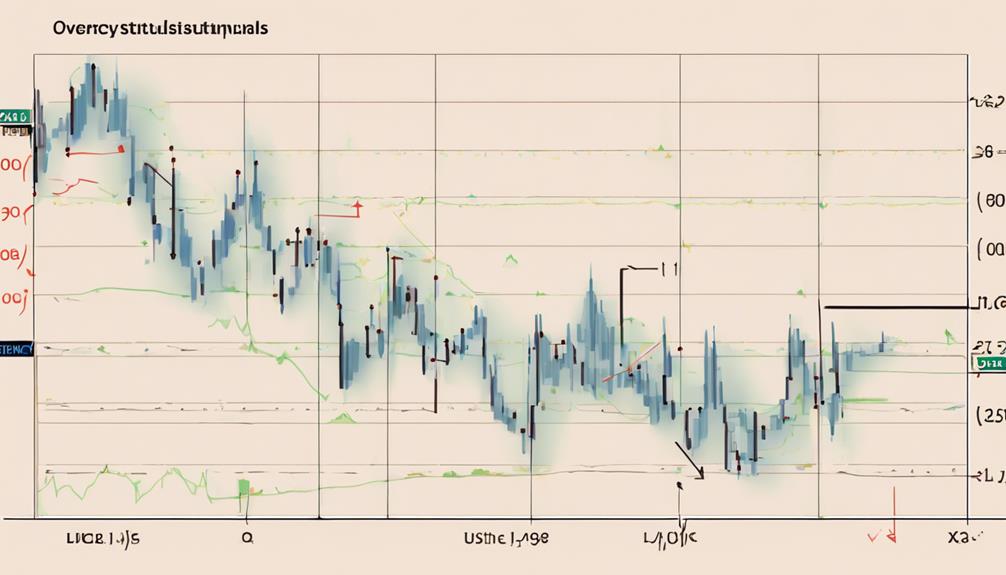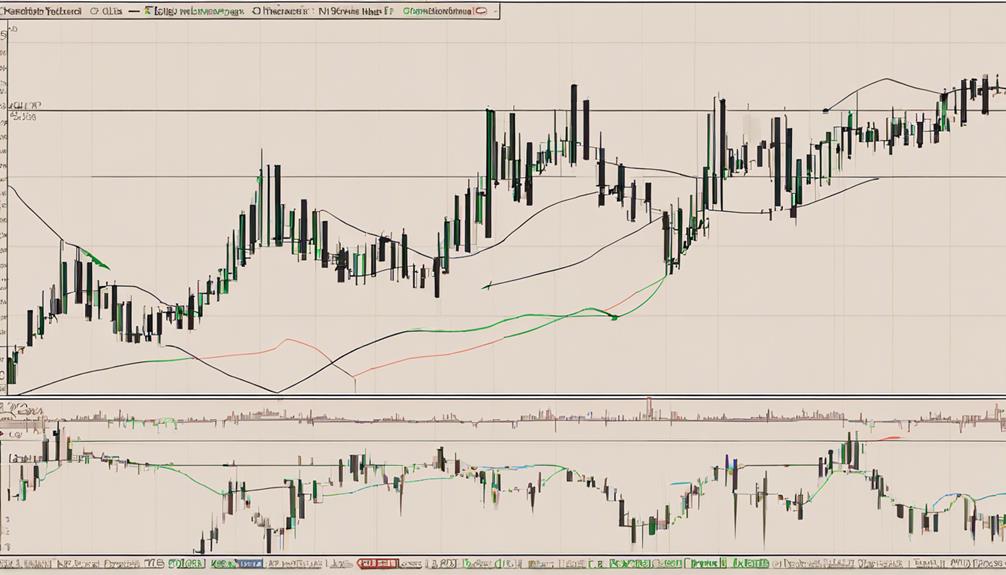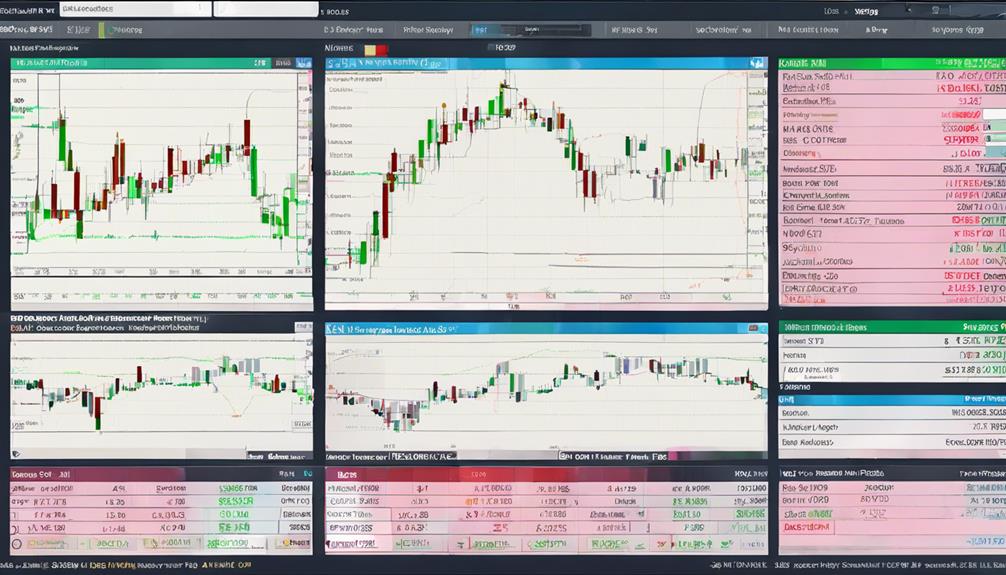When navigating the intricate world of Forex trading, it's crucial to grasp the significance of mastering technical indicators.
By honing your skills in understanding the intricacies of Bollinger Bands, Relative Strength Index (RSI), and Stochastic Oscillator, you can gain a competitive edge in the market.
These tools offer invaluable insights into market trends and potential entry/exit points, but the key lies in how you interpret and apply them effectively.
Stay tuned to uncover how these essential tips can elevate your trading game and lead you to more informed decision-making in the dynamic Forex landscape.
Understanding Bollinger Bands
When analyzing market trends, understanding Bollinger Bands is crucial for traders seeking to identify potential price movements based on market volatility and price levels.
Bollinger Bands consist of a middle line derived from a moving average and upper/lower bands that are set at two standard deviations away from the average. These bands adjust to market conditions, widening during high volatility and narrowing during low volatility periods.
Traders rely on Bollinger Bands to spot trend reversals when prices breach the upper or lower bands, signaling potential overbought or oversold conditions. By monitoring price movements relative to the bands, traders can anticipate market volatility, potential price breakouts, and make informed decisions based on the insights provided by Bollinger Bands.
Mastering Relative Strength Index (RSI)

Mastering the Relative Strength Index (RSI) involves understanding how this indicator measures price momentum and aids traders in identifying potential trend reversals. RSI values, ranging from 0 to 100, signal overbought conditions above 70 and oversold conditions below 30.
To anticipate trend changes, look for divergence between RSI and price movements. Utilize RSI alongside other indicators for more accurate trading signals and confirmation of potential market direction changes. By analyzing these criteria, traders can enhance the accuracy of their trading decisions and better navigate the complexities of the forex market.
Understanding the nuances of RSI is crucial for maximizing its effectiveness in predicting market trends and identifying profitable trading opportunities.
Utilizing Stochastic Oscillator Effectively

To effectively utilize the Stochastic Oscillator in forex trading, understanding its calculation method and the significance of its %K and %D lines is essential for making informed trading decisions.
The Stochastic Oscillator compares the closing price to the price range over a specific period, with the %K line indicating the current price's position relative to the high-low range, and the %D line representing a 5-day SMA of the %K line for smoother signals.
Traders can adjust the period settings based on prevailing market conditions. Stochastic crossovers, especially when combined with indicators like RSI, can help identify potential entry and exit points in the market.
Interpreting Trend-following Indicators

Understanding trend-following indicators like moving averages is crucial for identifying and assessing the overall direction of market trends effectively. Moving averages, such as the 50-day and 200-day moving averages, are commonly used to signal trend changes based on historical price data.
Traders rely on these indicators to determine whether to enter buy or sell positions. While trend-following indicators like MACD indicators, Bollinger Bands, and RSI indicator provide insight into market trends, they don't offer specific entry or exit points.
Integrating Multiple Indicators for Analysis

Integrating multiple indicators in your analysis enhances the accuracy of market assessments and helps confirm signals while reducing false trading opportunities. By combining indicators like MACD, RSI, and Bollinger Bands, you gain a more comprehensive view of market trends and potential entry/exit points. This approach allows you to cross-reference signals from different indicators, creating a robust trading strategy. Understanding how these indicators complement each other is crucial for improving decision-making in forex trading.
Key Points:
- Utilizing MACD, RSI, and Bollinger Bands together enhances the accuracy of market analysis.
- Cross-referencing signals from various indicators helps confirm trading signals and minimize false opportunities.
- Integrating multiple indicators provides a holistic view for establishing effective entry/exit points and refining your trading strategy.
How Do Forex Volatility Indicators Tie into Forex Technical Indicators?
Forex volatility indicators insights can provide valuable information on market conditions. When combined with other forex technical indicators, such as moving averages or Bollinger Bands, traders can gain a clearer understanding of potential price movements. By interpreting forex volatility indicators insights alongside other indicators, traders can make more informed decisions.
How Can Forex Technical Indicators help with Investing in the Hang Seng Index?
When you are ready to start investing Hang Seng Index, Forex technical indicators can be a valuable tool. By analyzing the price movements and trends in the Hang Seng Index, these indicators can help investors make informed decisions about when to buy or sell, ultimately maximizing their investment potential.
How can Forex Deviation Levels Enhance the Use of Technical Indicators in Forex Trading?
A complete guide to mastering forex deviation levels can greatly enhance the use of technical indicators in forex trading. By understanding how deviation levels can indicate potential market movements, traders can make more informed decisions when using technical analysis to predict price trends and patterns in the forex market.
Frequently Asked Questions
What Are the Top Three Technical Indicators?
You should focus on the Moving Average Convergence Divergence (MACD), Relative Strength Index (RSI), and Bollinger Bands as the top technical indicators in Forex. MACD reveals trend changes, RSI indicates overbought/oversold conditions, and Bollinger Bands show volatility and breakout points.
What Is the No 1 Indicator for Forex?
The number one indicator for forex trading is the Moving Average Convergence/Divergence (MACD). MACD compares two moving averages to spot trend changes, aiding in entry/exit decisions. Its versatility and effectiveness in trend analysis make it a popular choice among traders.
Which Indicator Has Highest Accuracy?
You might think the RSI indicator reigns supreme, but don't bet it all. Consider the market context, use a mix of indicators, and test rigorously. The real high-accuracy indicator is your holistic strategy.
What Indicators Work Well Together?
When considering which indicators work well together, focus on pairing the Relative Strength Index (RSI) with Bollinger Bands for spotting overbought/oversold conditions. Combining the Moving Average Convergence/Divergence (MACD) with the Stochastic Oscillator enhances trend confirmation.
Conclusion
In conclusion, mastering Forex technical indicators is like having a toolbox filled with different tools for various tasks.
Just like a skilled craftsman selects the right tool for the job, traders must carefully choose and utilize indicators to navigate the complexities of the market.
By understanding their purpose, customizing settings, and combining them effectively, you can craft a successful trading strategy that hones in on trends and maximizes opportunities for profit.
